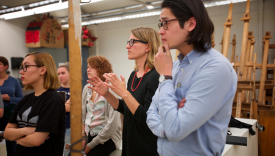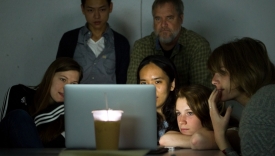Arabic 202 - Second-Year Arabic II
M/W/F | 10:00 AM - 10:50 AM
This is a continuation of Second-Year Arabic I. We will complete the study of the Al-Kitaab II book sequence along with additional instructional materials. In this course, we will continue perfecting knowledge of Arabic integrating the four skills: speaking, listening, reading, and writing using a communicative-oriented, proficiency-based approach. By the end of this semester, you should have sufficient comprehension in Arabic to understand most routine social demands and most non-technical real-life conversations as well as some discussions on concrete topics related to particular interests and special fields of competence in a general professional proficiency level. You will have broad enough vocabulary that will enable you to read within a normal range of speed with almost complete comprehension a variety of authentic prose material and be able to write about similar topics. Also by the end of this semester, you should have a wide range of communicative language ability including grammatical knowledge, discourse knowledge and sociolinguistic knowledge of the Arabic language. You should expect text assignments as well as work with DVDs, audio and video materials and websites. Exercises and activities include essay writing, social interactions, role plays and in-class conversations, oral and video presentations that cover the interplay of language and culture, extra-curricular activities and a final project.
Requisite: ARAB 201 or equivalent or consent of the instructor. Limited to 18 students. Spring semester. Five College Lecturer Alswaid.
How to handle overenrollment: Priority given to ASLC majors, then to class year (seniors first).
Students who enroll in this course will likely encounter and be expected to engage in the following intellectual skills, modes of learning, and assessment: Students are expected to make four presentations using technology like Google Slides, write four essays in the form of a story, argument, and analysis, and complete a final project in the form of a collage and present it in class, which will be a summary of the four chapters they learned. For this, students can use pictures and other creative tools.



